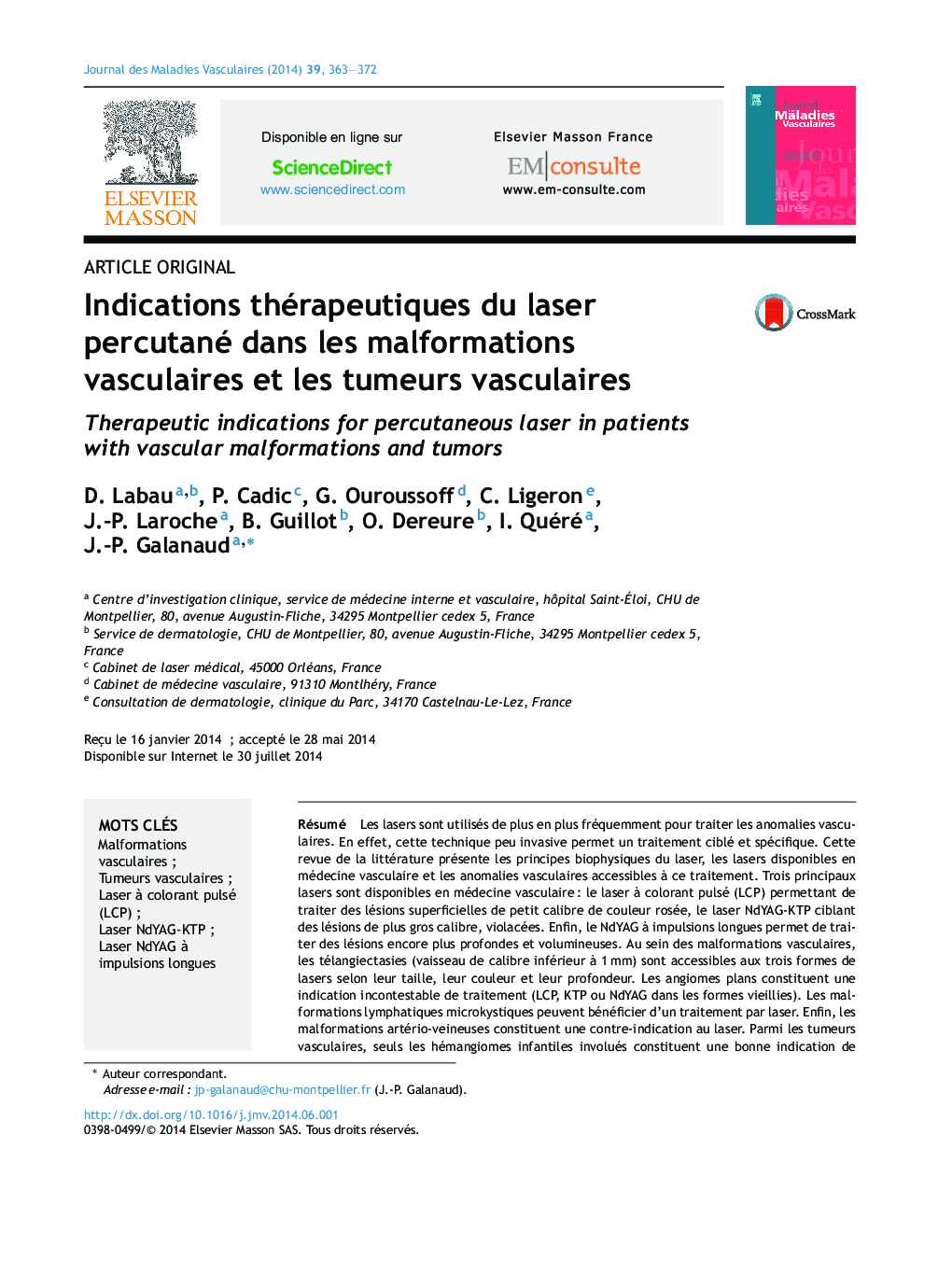| Article ID | Journal | Published Year | Pages | File Type |
|---|---|---|---|---|
| 2974737 | Journal des Maladies Vasculaires | 2014 | 10 Pages |
Abstract
Lasers are increasingly used to treat vascular abnormalities. Indeed, this technique is non-invasive and allows a specific treatment. The aim of this review is to present some biophysical principles of the lasers, to describe the different sorts of lasers available for treatment in vascular medicine indications. Three principal lasers exist in vascular medicine: the pulsed-dye laser, for the treatment of superficial pink lesions, the NdYAG-KTP laser for purple and bigger lesions, and the NdYAG long pulse laser for even deeper and bigger vascular lesions. In vascular malformations, port wine stains can also be treated by pulsed-dye laser, KTP or NdYAG when they are old and thick. Telangiectasias are good indications for the three sorts of lasers, depending on their depth, color and size. Microcystic lymphatic malformations can be improved by laser treatment. Arterio-venous malformations constitute a contraindication of laser treatment. In vascular tumors, involuted infantile hemangiomas constitute an excellent indication of pulsed-dye laser treatment. Controlled studies are necessary to evaluate and to compare the efficacy of each laser, in order to determine their optimal indications and optimal parameters for each machine.
Keywords
Related Topics
Health Sciences
Medicine and Dentistry
Cardiology and Cardiovascular Medicine
Authors
D. Labau, P. Cadic, G. Ouroussoff, C. Ligeron, J.-P. Laroche, B. Guillot, O. Dereure, I. Quéré, J.-P. Galanaud,
